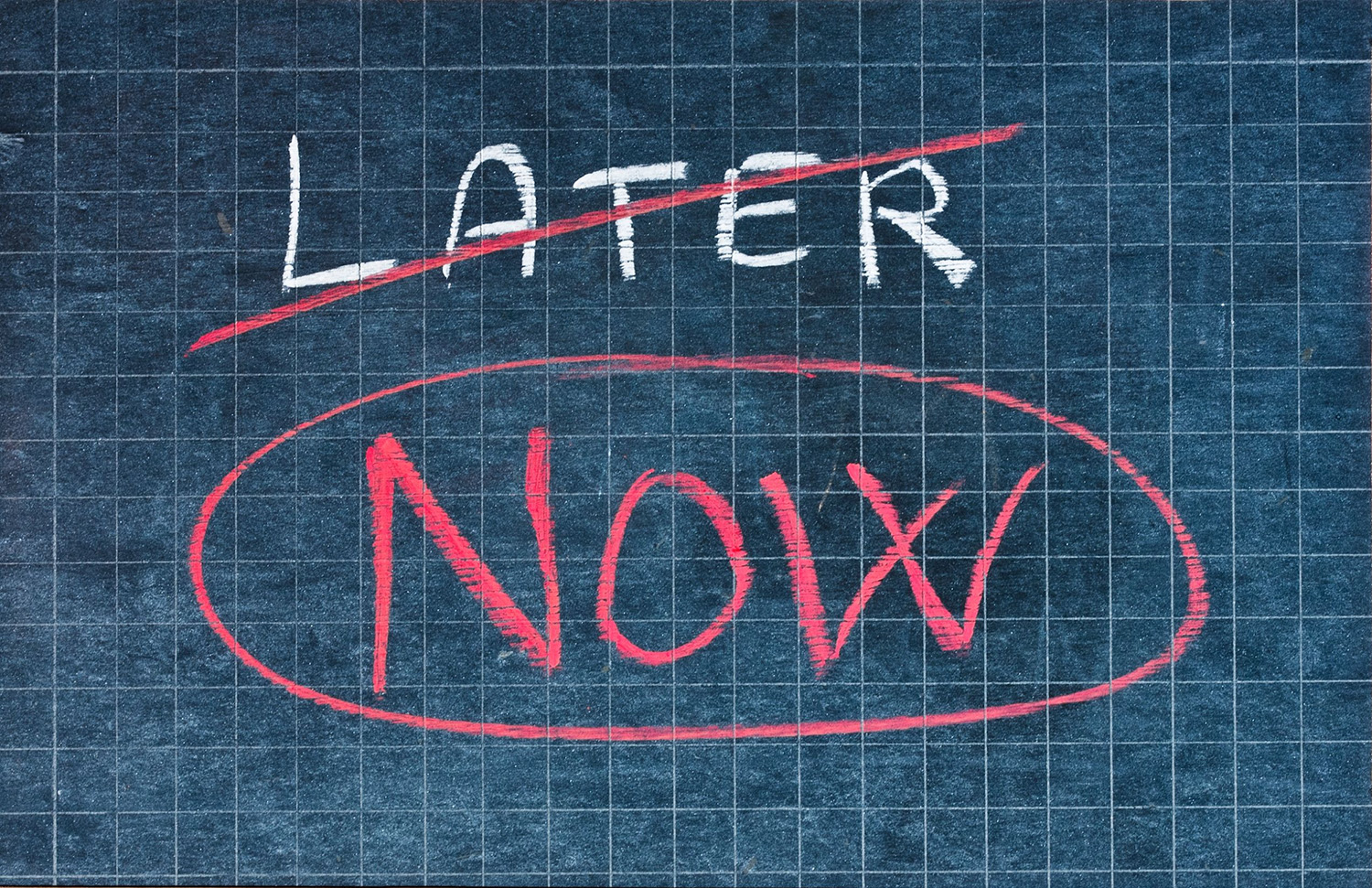All organisations want to sustainably improve so why are we not starting immediately and taking full advantage?
It can be hard to get started with a task or activity you know you really should start sometimes – my currently unused gym membership is a fine example.
Getting sidetracked personally is very similar to putting off tasks at an Orgnisational level and we are terrible for it!
External factors abound in business, ‘we have a problem with supplier x’, ‘we must deliver this next quarters orders first’, ‘we could be winning new business’, ‘we’re not sure where the shareholders want to go yet – they’ll meet in December to decide’
Look at what’s going on here. We’re actually justifying not doing something as things are changing. Isn’t it logical that we wait and see what happens before getting into something new?
Well depending on what it is, yes. But where Lean improvement is concerned it certainly is not.
Every day that we put off improving is a missed opportunity. We live in a rapidly changing environment, more so today than ever. As we try to keep up with the pace of the world out side of our businesses while taking a logical and measured approach we realise that the rate of change is greater than the rate of our decision making. We can get trapped in a loop of status quo – always waiting for the right time. It doesn’t come.
Let try and understand why we do this. Piers Steel of the University of Calgary developed an equation for personal procrastination
U = E x V / I x D
Where U is the motivation to complete the task. E, the expectation of success. V is the value of completion. I, our impulsiveness or the immediacy of a task and D is our sensitivity to delay.
So, what prevents us from undertaking improvement work if we know Lean works and the benefits are high? High values of I and/or D that’s what.
High values for I come from being unable to decide what to work on next or that we keep getting distracted by internal/external factors. High values of D are found when projects feel too big, Goal are poorly defined or rewards are too far away.
It takes a brave leader to say that enough is enough and to draw a line in the sand and say that today we do something different. We must try to extract ourselves from the ongoing loop of just sustaining performance by heavily managed scenarios and hard work.
Now I’m not saying that taking on an improvement initiative isn’t hard work, nor am I saying that once improvements are made, the work gets any lighter. What I am suggesting is that it becomes more purposeful, more effective and more productive.
We need to create a clear line of sight on a top level objective and line up our organisation to understand it. We need to measure progress towards our objective, taking priority action based only on these measures. We must then break down the effort into smaller chunks and take advantage of the performance gains that come with it rapidly.
And if something external does change, then fine. Lets deal with that then, but at least we will have taken advantage of all of the improvements made up to that point.
It is also worth noting that a high performing organisation or business is in much more control of the external factors and decisions. When you are performing well, you have much more sway to set your own.
It is so important to be mindful of ‘putting off today what you can do tomorrow’ and react on this observation. Address the underlying thinking that prevents action or else you will undoubtedly miss opportunities left right and center that others are taking.
Don’t wait. Start taking advantage of continuous improvement today.
